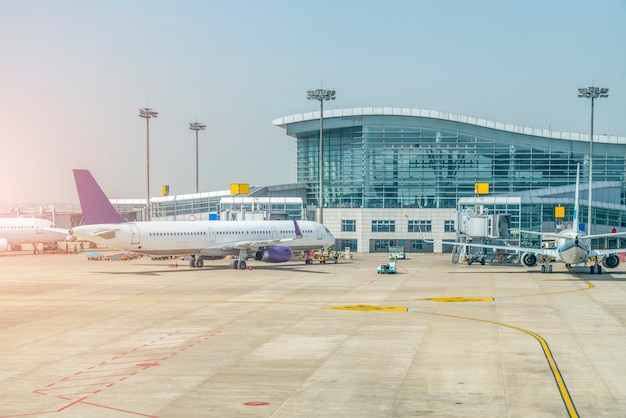Whether you’re part of the aviation industry or a passenger who depends on it for travel, you’ve probably come across Ground Support Equipment (GSE) at airports.
These vital machines, including baggage carts, aircraft tugs, and ground power units, ensure that airports run smoothly and flight operations remain safe. However, similar to any machinery, GSE needs consistent maintenance to operate at its best and prevent expensive breakdowns.
Contents
Manufacturer’s Recommendations:
When it comes to maintaining your Ground Support Equipment (GSE), the companies that make these machines provide comprehensive guidelines on how often they should be serviced, which includes regular checks and more extensive overhauls.
They result from rigorous testing and the expertise of engineers who understand the equipment inside out. By sticking to these manufacturer-recommended maintenance intervals, you can be confident that your GSE will operate at its best, ensuring both efficiency and safety. So, it’s wise to consider these guidelines as your starting point when planning your GSE maintenance routine.
Usage Frequency:
The need for GSE maintenance is intricately linked to how frequently and intensively these machines are used. Essentially, it boils down to usage frequency. Imagine it like this: bustling airports with a continuous flow of aircraft movements place much greater demands on their GSE than smaller airports with lower activity levels.
To ensure that your GSE remains in top-notch condition, it’s essential to track its usage hours or cycles. This data helps you tailor your maintenance intervals to match the specific demands placed on each piece of equipment. For GSE at high-traffic airports, more frequent servicing may be kept up to the mark to keep them running smoothly and safely. So, usage frequency plays an important role in planning the GSE schedule.
Environmental Conditions:

The environment in which Ground Support Equipment (GSE) operates can significantly impact its maintenance needs. In such challenging environments, equipment deterioration can speed up significantly. This means that GSEs operating in these challenging environments may need more frequent maintenance.
It’s all about adapting maintenance schedules to your equipment’s specific conditions. By doing so, you can ensure that your GSE remains reliable and safe, even in the face of environmental challenges. So, always consider environmental conditions when planning your GSE service and maintenance regimen.
Age Of The Equipment:
Ground Support Equipment’s (GSE) age is a crucial factor in determining its maintenance requirements. Just like any other machinery, as GSE gets older, its maintenance needs can evolve. Older equipment may demand more frequent inspections and replacements of critical components to guarantee ongoing reliability.
Regular checks, part replacements, and proactive servicing become even more critical for older units to ensure they continue to function safely and efficiently. In essence, age is not a hindrance to GSE serviceability as long as a diligent maintenance strategy is in place.
Regulatory Requirements:
The regulatory requirements encompass a wide range of aspects related to GSE maintenance, including inspection intervals, servicing protocols, and component replacements. They are meticulously designed to guarantee and maintain the top level of protection and reliability in airport operations.
For airport operators and GSE providers, it’s a fundamental responsibility to prioritize the safety and efficiency of aviation operations, which directly impact the well-being of passengers and airport personnel. Regulatory demands form the foundation of GSE maintenance procedures, establishing an organized system prioritizing safety as the top concern.
Regular Inspections:
Regular inspections conducted by skilled technicians are the linchpin of proactive GSE maintenance. These experts have the knowledge to delve into the nuances of equipment condition, ensuring that lubrication is at its best and detecting any indications of wear or decline. These inspections enable timely and cost-effective maintenance measures by catching potential issues in their infancy, ultimately minimizing downtime and keeping airport operations running smoothly.
Conclusion:
Maintaining and servicing Ground Support Equipment is pivotal for the safe and efficient functioning of airports and the broader aviation industry.
By following manufacturer recommendations, considering usage, accounting for environmental conditions, addressing equipment age, adhering to regulatory requirements, and conducting regular inspections, you can establish a proactive approach to a robust maintenance program tailored to your specific GSE needs.
Read Also:












